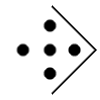Euchre was invented sometime before 1864 by the Pennsylvania Dutch (Morehead and Mott-Smith 50). It was based on an earlier game called Ecarte, which was first popular in France during the early 19th century. Euchre was once considered the U.S. national game (The Diagram Group 86-87). The word "bower" in the game comes from the German word "bauer", which means "farmer." It is another name for the jack card. Euchre is most popular in the northeastern United States. The game Five Hundred developed from Euchre (Morehead and Mott-Smith 50). Euchre is very similar to Whist, although the deck is smaller, and the ranking of the cards is different.
Below, I explain how to play Euchre with a physical card deck, but if you would like to try this game online for free, I recommend the version at solitaired.com. The game page also explains the rules of the game, scoring, and some playing strategy.
Euchre
The rules for this game come from The Way to Play by the Diagram Group, pp. 82-83, 86, with some further information from Hoyle's Rules of Games ed. by Morehead and Mott-Smith, pp. 50-53, and The Key to Hoyle's Games, pp. 53-55, 149.
Players: 4 people playing as teams of 2 is most common. The rules given below are based on the four-player game, although games of 2 to 6 people are possible.
Object: To win the most tricks.
The Deck: A 32-card deck (Take a regular 52-card deck and remove all of the twos, threes, fours, fives, and sixes. Keep the threes and fours handy because they can be used to keep score.)
Seating Note: For a game with 4 people on two teams, the partners of a team should be sitting directly across from one another, or at least in a way that alternates turns between members of the two teams. (Ex. Player 1 of Team 1, Player 1 of Team 2, Player 2 of Team 1, Player 2 of Team 2.)
The Deal: Start by dealing five cards to each player. The cards are dealt in batches of two and three. The dealer can give each player two cards, then three cards, or the other way around (Morehead and Mott-Smith 50). After everyone has five cards, the dealer turns over the next card on top of the deck to show everyone its suit. The suit of this card will be the trump suit.
Trump Suit: The trump suit is used in determining who wins the tricks. The jack of the trump suit is called the "right bower" and is the highest-ranking card. The next highest-ranking card is the jack of the suit which is the same color as the trump suit. It is called the "left bower." Since it is now part of the trump suit, that jack no longer has any ranking in its own suit (The Key 53). (Ex. If the card that the dealer turns up is the 10 of diamonds, the trump suit is diamonds. The right bower will be the jack of diamonds, and the left bower will be the jack of hearts.) After the right bower and the left bower, the cards of the trump suit rank in the following order, from highest to lowest: ace, king, queen, 10, 9, 8, and 7. The non-trump suits rank normally, with ace as the highest (followed by king, queen, and jack in that order) and seven as the lowest.
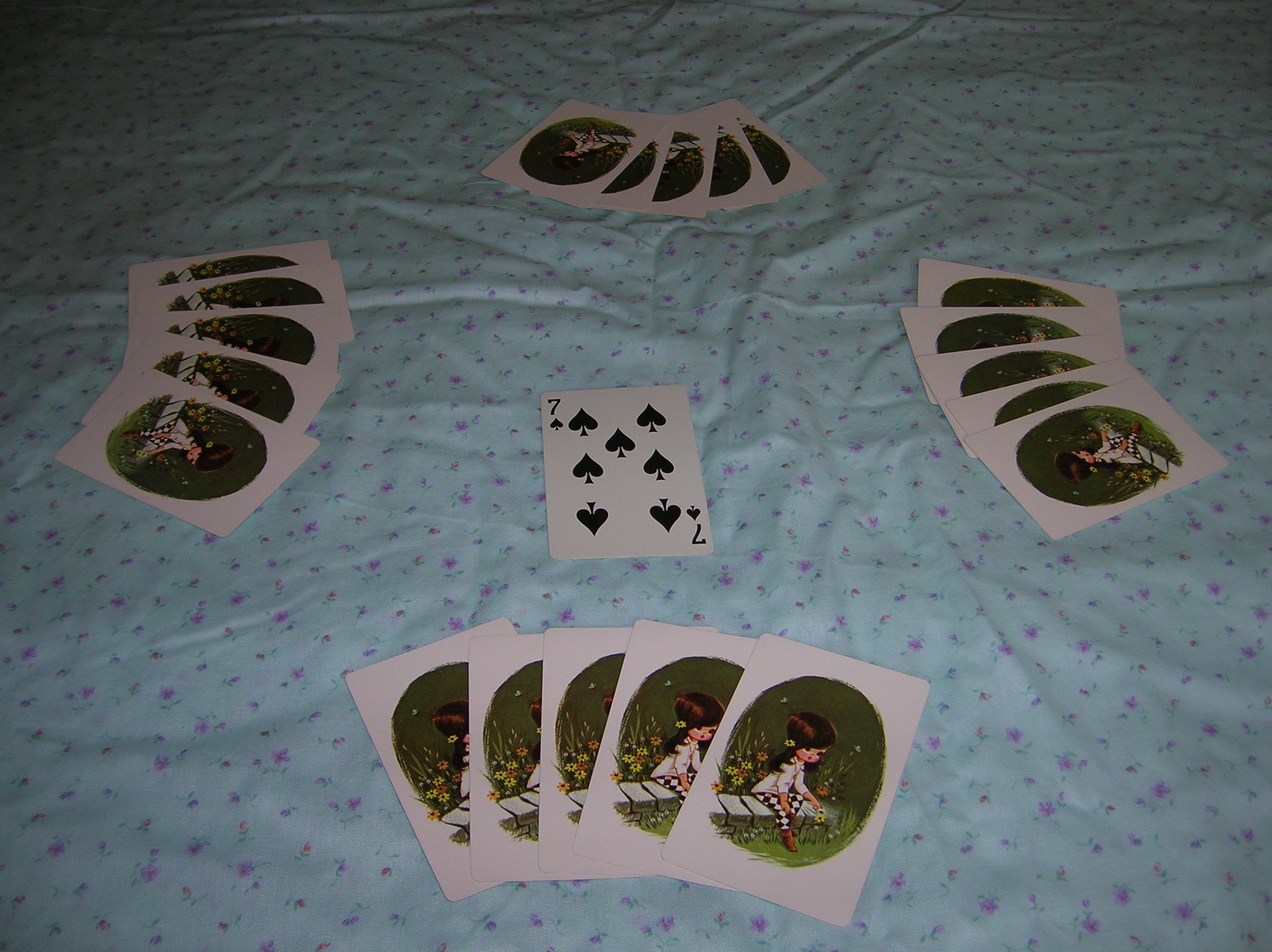
The players should take a moment to look at their cards and decide if they are satisfied with the trump suit. (The more cards of the trump suit the players have, the more likely they are to win tricks.) The players have the chance to change the trump suit if they are not satisfied with it. The player sitting to the left of the dealer has the first chance to say if the trump suit is acceptable. If that player is satisfied with it, he says, "I order it up." The dealer's partner says, "I assist", if he approves of it, too. The third player (who is on the same team as the first player) also says, "I order it up" to show he approves of the trump suit. The dealer doesn't have to say anything, but if he is satisfied with the trump suit, he picks up the card that indicated the trump suit and adds it to his own hand, discarding one of the other cards that he holds to bring his hand back down to five. The Trump suit only changes if no one approves of it. If even one player accepts the trump suit, the game begins.
If anyone objects to the trump suit, he says, "I pass." If all four players object to the trump suit, the players get a chance (one at a time) to either name a new trump suit or pass. The new trump suit is the first one named by a player. After the new trump suit is named, the game begins. The person who either accepted the original trump or named a new trump suit is called the "maker" (Morehead and Mott-Smith 51). Remember who the maker was for each hand because it makes a difference in the scoring.
The maker has a chance to play the hand by himself instead of with his partner if he wishes. If he wants to wants to play by himself, he says, "I play alone." Then, his partner lays down his cards and does nothing for the duration of the hand. However, the non-playing partner will still share his partner's score. If the maker plays by himself, one member of the opposing team also has the right to play without his partner. He signals that he wants to do this by saying, "I defend alone." Then, his partner also lays down his cards and does nothing for the rest of the hand (Morehead and Mott-Smith 51). If no one accepts the trump suit and no one names a new one, everyone turns in their cards, and the player to the left of the last dealer deals a new hand.
Winning Tricks: The tricks in Euchre work like the tricks in Whist. The player sitting to the left of the dealer begins the game by laying a card down on the table (this is called "leading"). The other players take turns laying down cards also. If a player has cards in the suit that the first player lead, he must lay down one of them (this is called "following suit"). If a player does not have any cards in that suit, he can lay down a card from any other suit. (Remember, the left bower is part of the trump suit now, not part of its original suit.) The cards that the players lay on the table are the "trick."
Tip: If you don't have a card in the suit led, try to play one in the trump suit. The higher the value, the more likely you'll win the trick. If you don't have the trump suit either, put down a card you won't mind discarding (The Key 149). It's generally best to discard low-value cards, especially when you can tell that you're not going to win a trick by the cards that other players have laid down. You can get more deeply into strategy after studying the rules for winning tricks.
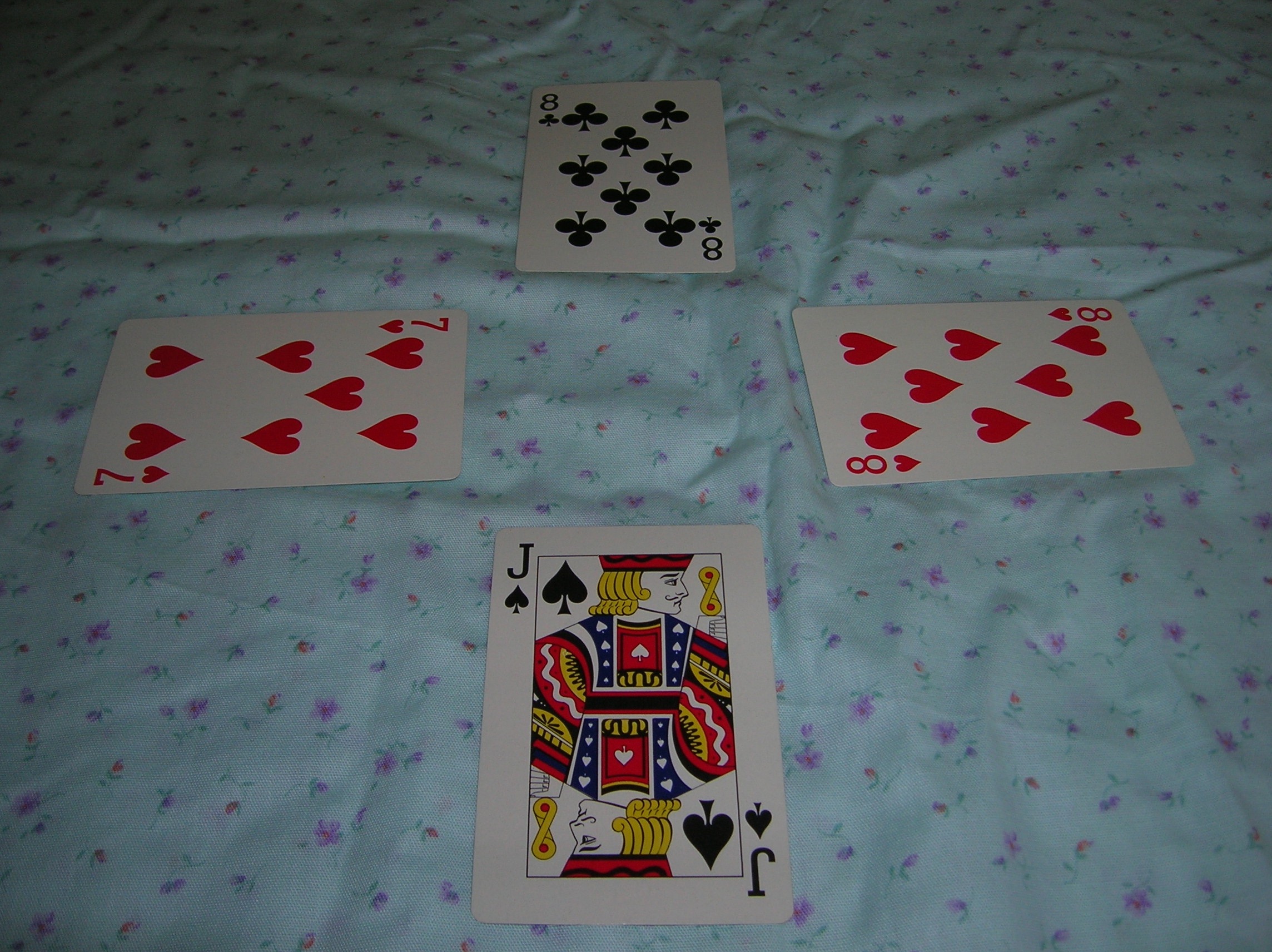
There are two rules for deciding who wins the trick, and they must be followed in order:
- The winner is the one with the highest card in the trump suit, if a trump has been played. (Remember that in this game, jack is the highest trump and seven is the lowest. Also, don't forget that the second highest-ranking card in the trump suit is the left bower -- the jack in the suit that's the same color as the trump suit.)
- If no one has played a card in the trump suit, the winner is the player with the highest card in the leading suit. (The highest card of any suit is the ace, and seven is the lowest. Once again, remember that the left bower is part of the trump suit now, not part of its original suit.)
The player who won the trick collects the cards in the trick and lays the pile down in front of him. Continue playing tricks until everyone runs out of cards in their hands. There are five tricks in a hand. The person who won the last trick gets to lead the next one. The game can last multiple hands, and with each new hand, the deal passes to the left (The Key 54).
Before dealing out a new hand, add up the score from the last one (see Scoring below) and check to see if there is a winner yet.
Tips for Strategy: Even the lowest-value trump might win the trick if no higher trumps have been played. Having a good memory is helpful in this game. If you can remember whether or not the highest-ranking cards have already been played, you'll know how likely you are to take a trick with a lower-ranking card. (Ex. If you know that an earlier trick was won with the ace of hearts, you have a good chance of taking of taking a trick with the king of hearts, if hearts is the leading suit. If hearts is the trump suit, keep track of the jack of hearts and the jack of diamonds, which will be the two highest-ranking cards.)
Remember that you are playing as part of a team. If, by the cards that have already been laid down, you can see that your partner is about to win the trick, you can lay down a lesser card (if you have one), and let your partner take the trick. It will count for your team either way, and letting your partner win a trick allows you the chance to save one of your better cards for a later trick.
Penalties: If a player fails to follow suit but still has a card from the leading suit in his hand, it is called "revoking." If he corrects his mistake before the trick cards are given to the winner, there is no penalty. Otherwise, two points may be deducted from his team's score or awarded to his opponents' score. (Decide ahead of time which penalty you will use so everyone knows what to expect.) If the revoking player is playing without his partner, the penalty is 4 points (Morehead and Mott-Smith 52). I recommend going easy on new players while they're learning and waiving penalties at least during their first hand, but make sure that the other players in the game know what to expect before you begin.
Scoring: A game of Euchre usually lasts until one team gets 5 points (although some people use 7 or 10 points as the target). Players can use markers or counters of some kind for keeping score, but the traditional way to keep score is with a three card and a four card. One of the cards is placed face up, and the other card is used to cover up the pips on that card so that the number of pips showing represents the number of points that a team has.
- 1 point = Only the first pip on the three card showing.
- 2 points = The first two pips on the four card showing.
- 3 points = All of the pips on the three card showing, with the four card face down beneath it.
- 4 points = All of the pips on the four card showing, with the three card face down beneath it.
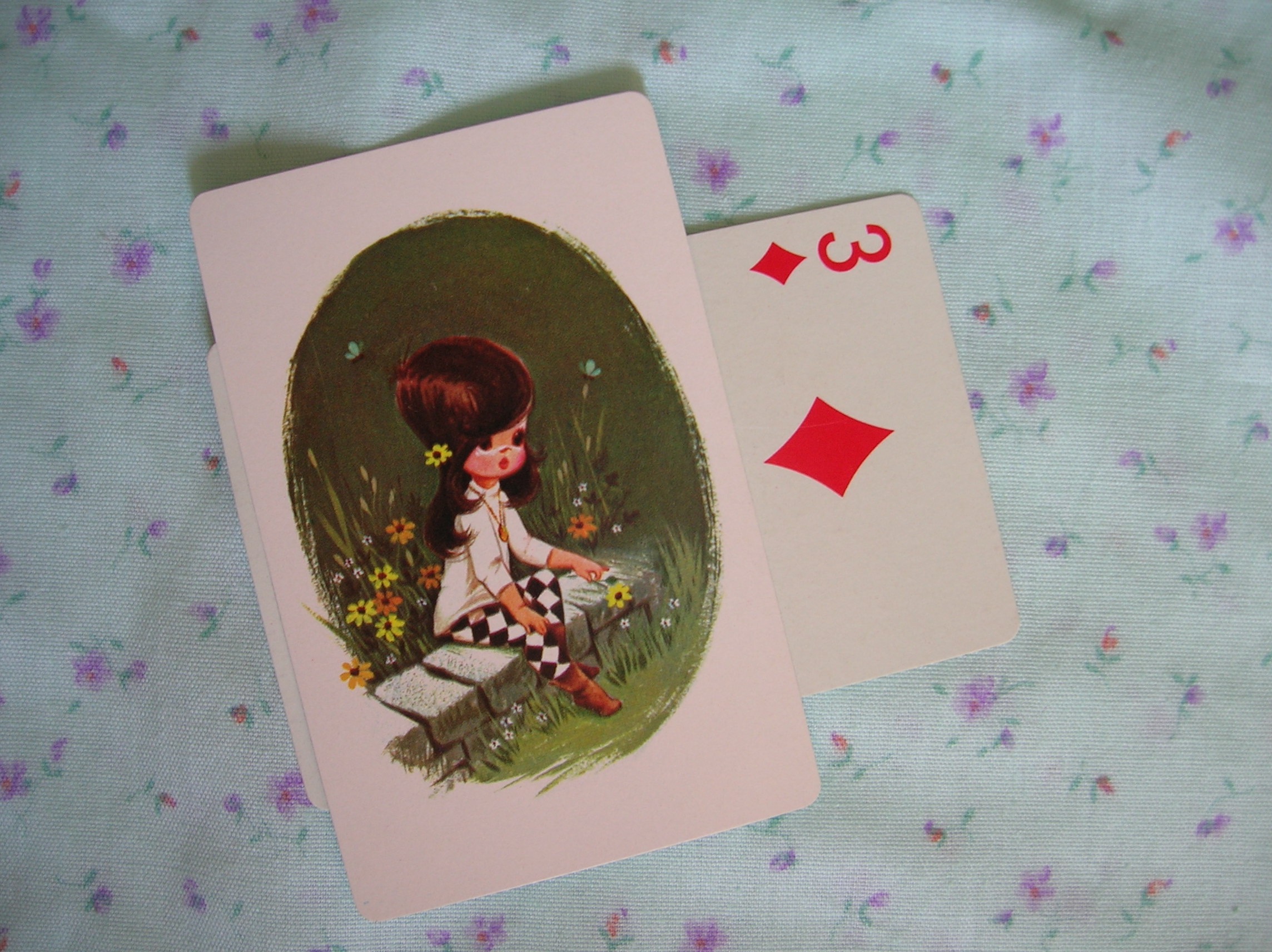
|
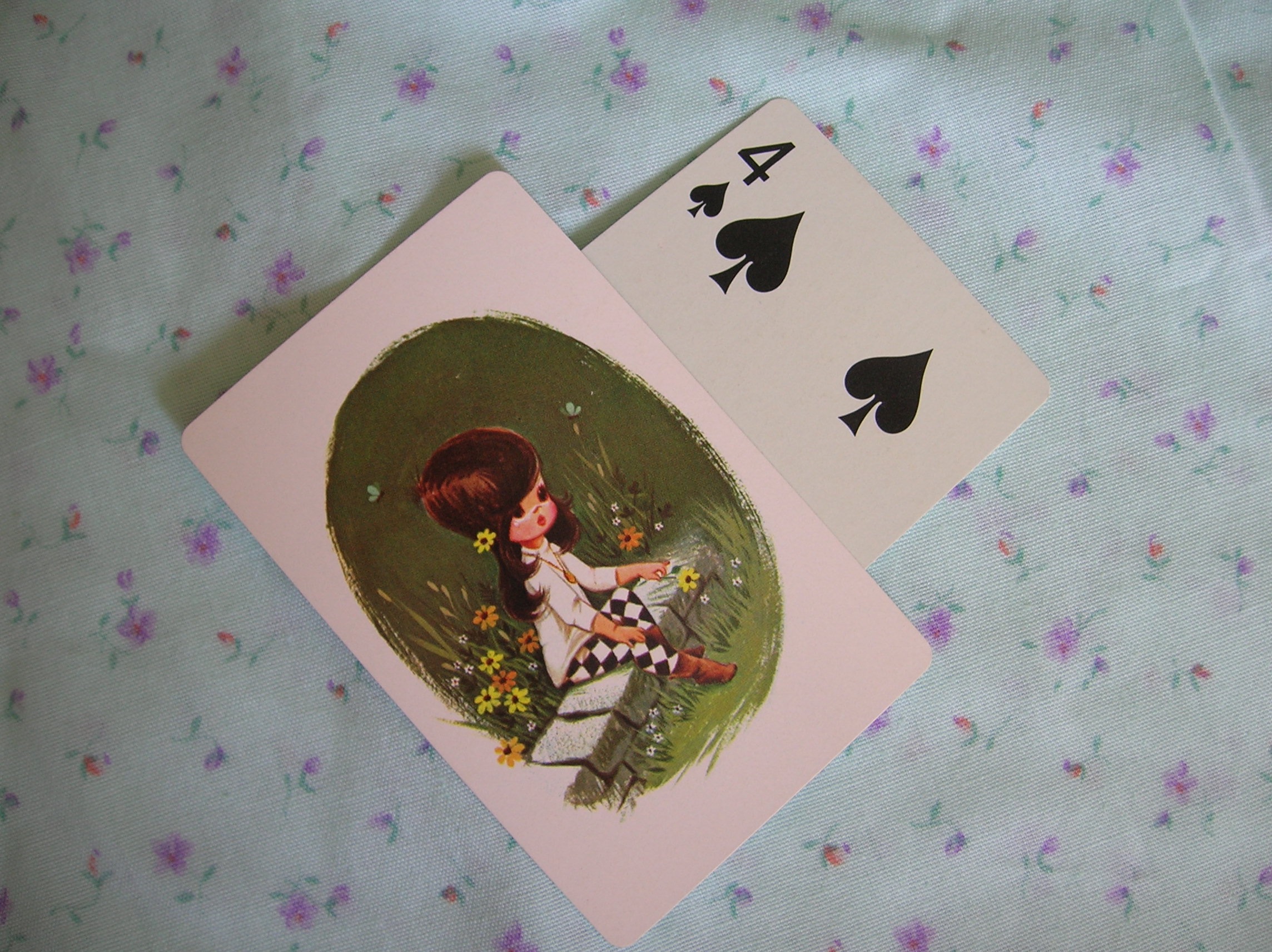
|
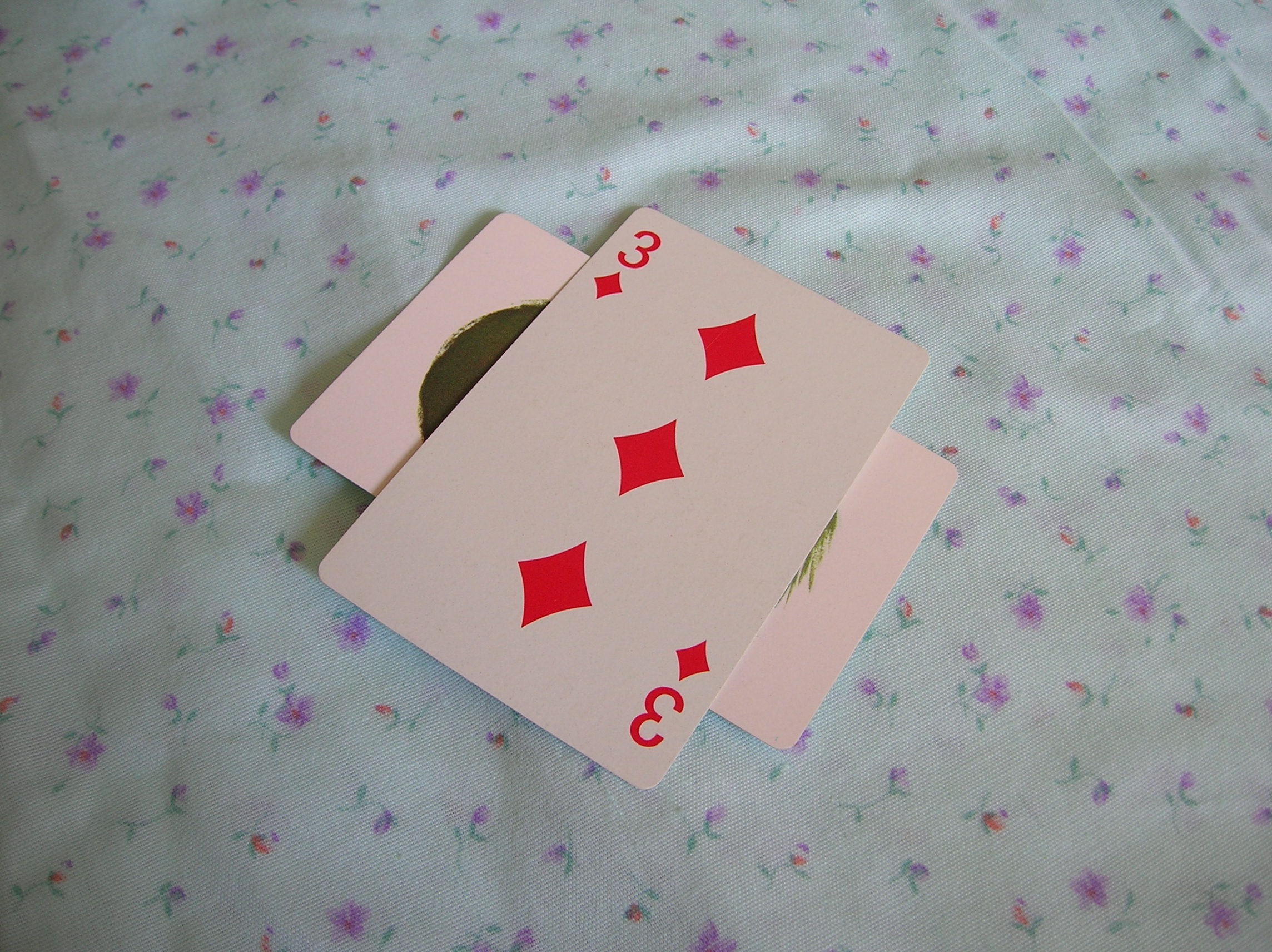
|
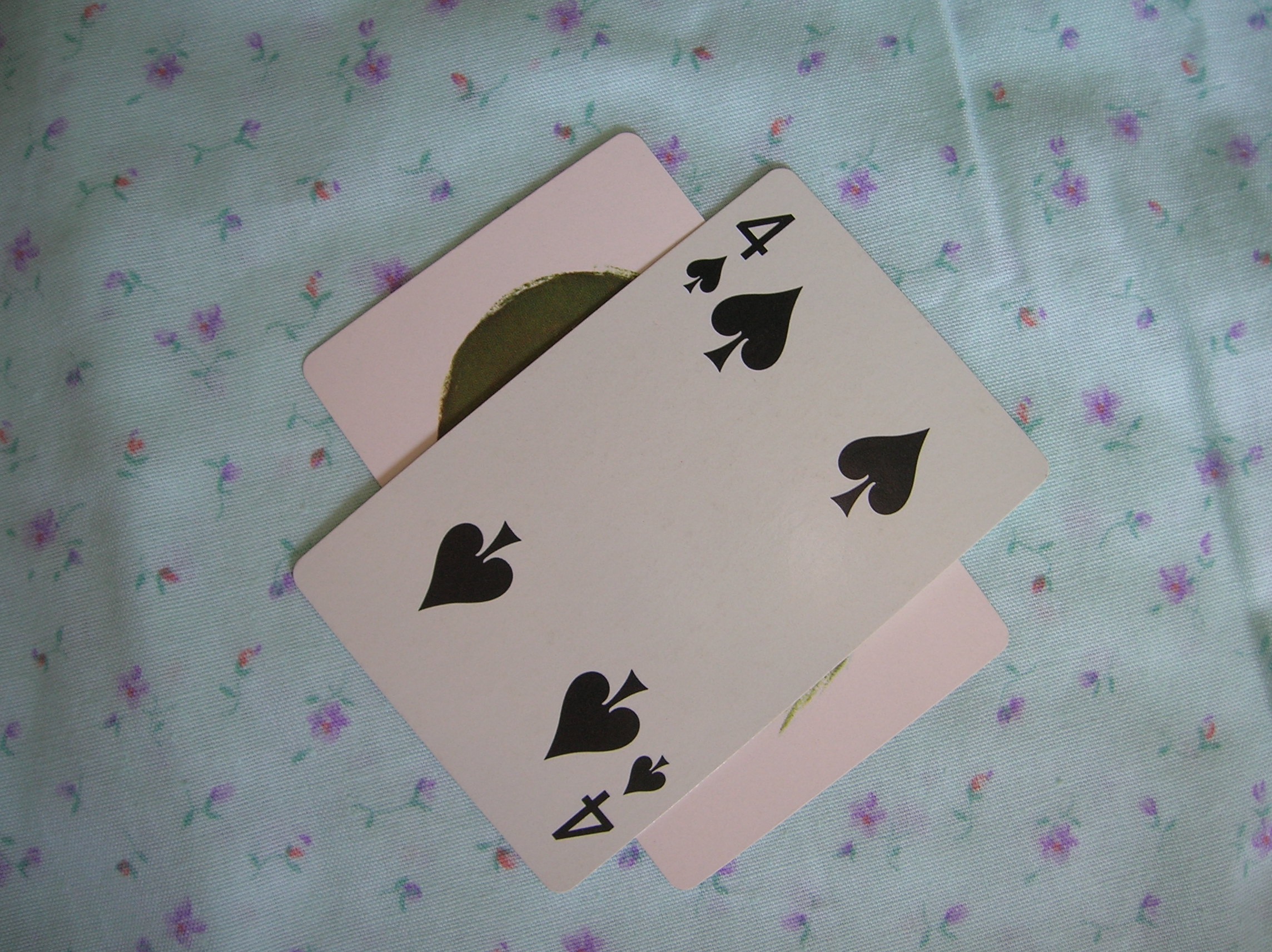
|
A team must win at least three tricks in order to receive points (Morehead and Mott-Smith 51). Possible points you can earn are:
- A "march" is when a team wins all five tricks in a hand, and is worth 2 points for the maker's team (or 4 points if the maker is playing by himself).
- If the maker's team wins three or four tricks, they get 1 point.
- If the maker's team only wins two tricks or less (which is called being "euchred"), the opposing team gets 2 points.
- If one member of the opposing team is defending alone, winning three or four tricks earns 2 points for his team and a march earns them 4 points.
Playing with Different Numbers of Players: Some versions of Euchre allow players to play as individuals instead of teams. The number of players can be anywhere from 2 to 6.
- Two-Handed Euchre
- This is a game for just two players. It's played with a 24-card deck (Take a 52-card deck and remove the twos through the eights). Apart from the smaller deck and the fact that the players don't need to state that they're playing without partners, the rules are the same as for regular Euchre. The scoring is the same also, but the players don't get a bonus for playing without partners (The Key 56).
- Three-Handed Euchre (aka Cutthroat Euchre)
- In this version, the players score as individuals. When taking tricks during a hand, the maker plays alone
against the other two players, who play as a team. This arrangement changes when the hand changes, and the maker
of the next hand will be by himself even if he was part of the team of two in the last hand (Morehead and
Mott-Smith 53). The scoring is similar to regular Euchre, but without the bonuses for playing alone.
- If the maker gets a march, he gets 3 points, and if he gets three or four tricks, he gets 1 point.
- If the maker is euchred, the other two players get 2 points each.
- Call-Ace Euchre
- This version is for 4 to 6 players, all playing as individuals. The rules are pretty much the same as for
regular Euchre but instead of the maker having the option to play alone, he has the option to play with a
partner if he wishes. He doesn't get to choose his partner by name but says, "I call upon the ace of (name of
suit)." The person holding that ace then becomes his partner. (Ex. If he said "I call upon the ace of hearts", the player
with that card in his hand will be the maker's partner.) If no one was dealt the ace that the maker named, then
the maker plays without a partner. The scoring works like this:
- If the maker gets a march while playing by himself, the points he earns are equal to the number of players in the game.
- If the maker wins three or four tricks by himself, he gets 1 point.
- If a partnership gets a march, each partner earns the same number of points, depending on how many players there are in the game (3 or 4 players = 2 points each, 5 or 6 players = 3 points each).
- If a partnership wins three or four tricks, each partner gets 1 point.
- If the maker or the maker's partnership is euchred, each of the other players get 2 points.
